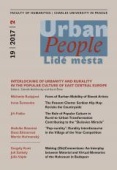Interlocking of Urbanity and Rurality in the Popular Culture of East Central Europe
Editorial Note
DOI:
https://doi.org/10.14712/12128112.3318Abstrakt
The historical narrative of nation building in East Central Europe has highlighted how national movements have linked the city and the village (see e.g. Hroch 2000: 156–161). The linear process of urbanization as a part of modernization has relied on a logic that interlocks rural and urban spaces in this region (Jemelka 2014, Brzostek 2014). Whilst on the one hand, both capitalist and state socialist modernization have brought an influx of rural migrants from the countryside to urban centers, this has, on the other hand, given rise to numerous artistic and social activities that have fostered an interest in rural space and culture (e.g. folklorism, (agro-)tourism, rural sentimentalism). It is only from this perspective that we see the emergence of tensions between popular culture rooted in traditional folk culture, cultural activities stimulated by new technologies, and the everyday life strategies of urban communities and subcultures. During the 20th century, different political regimes brought to the fore either rural or urban segments of the population, which in turn had a significant impact on popular culture. Taking this as a starting point, this thematic issue is focused on the question of an in-betweenness that could be dubbed “rurbanity”, comprising such phenomena that challenge the simple urban/rural split (Todorova 2009: 47–48, cf. Halstead 2008: 2–4).
Stahování
Publikováno
Jak citovat
Číslo
Sekce
Licence

Tato práce je licencována pod Mezinárodní licencí Creative Commons Attribution-NonCommercial-NoDerivatives 4.0.


